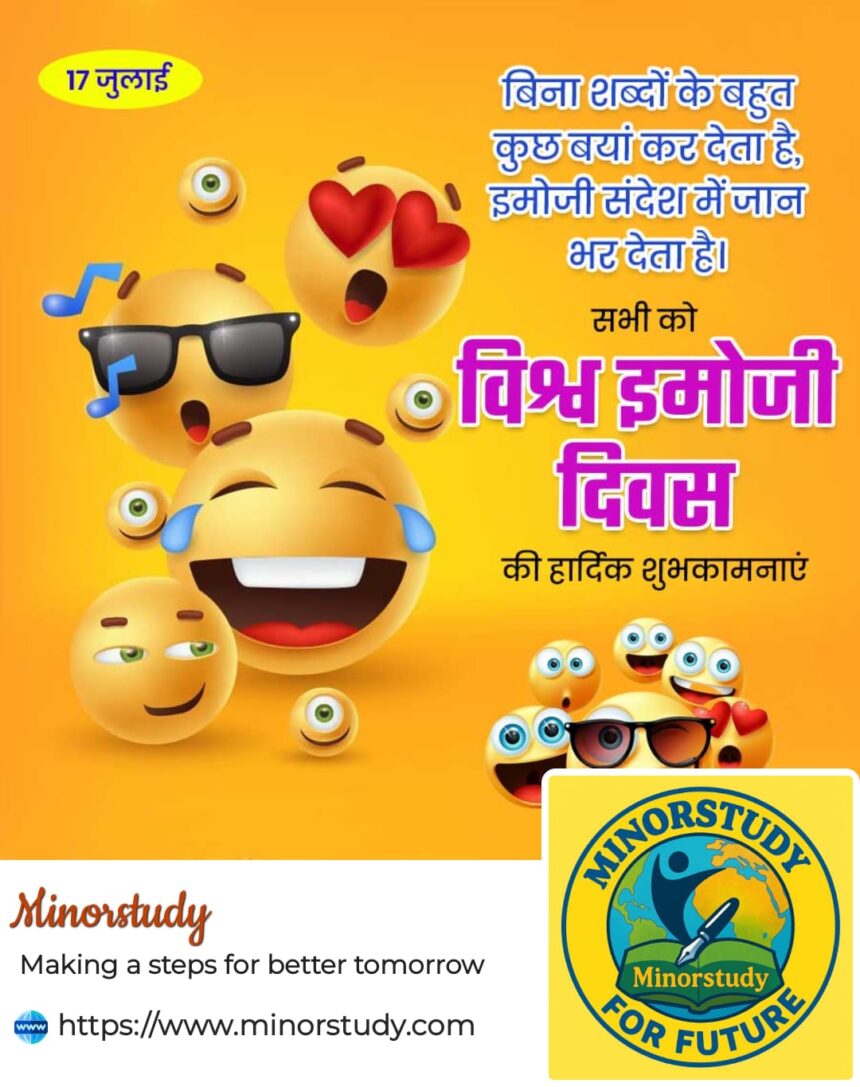😊 7 Fascinating Facts That Make World Emoji Day a Truly Joyful Digital Celebration
From 😂 to ❤️ to 🤯 — emojis have become the most universal language in the world. They transcend borders, break barriers, and turn plain texts into expressive, emotional, and fun interactions. That’s exactly why every year, World Emoji Day is celebrated with digital delight and creativity.
- 📜 History of World Emoji Day
- 📅 Emoji Timeline: Evolution of a Universal Language
- 🤩 7 Fascinating Facts About World Emoji Day
- 1. 📱 Emojis Are Used by Over 90% of Internet Users
- 2. 😂 ‘Face With Tears of Joy’ Is the Most Popular Emoji Ever
- 3. 🌍 Emojis Break Language Barriers
- 4. 🧠 Emojis Improve Digital Communication
- 5. 📖 Emojis Have Been Turned Into Literature
- 6. 🏆 Apple and Google Celebrate Emoji Day with Releases
- 7. 🕊️ Emojis Promote Inclusion and Equality
- ❓ FAQs About World Emoji Day
- 🎯 Importance in Life and Society
- 🌟 Significance of World Emoji Day
- 🎉 Observing World Emoji Day Creatively
- 💌 Heartfelt Emoji Day Wishes
- ✅ Conclusion: Small Icons, Big Emotions
Observed annually on July 17, World Emoji Day is not just about quirky smileys — it’s about celebrating a visual language that connects billions across the globe in real-time. In this human-friendly and deeply insightful article, you’ll learn everything about World Emoji Day, including its history, timeline, importance, fascinating facts, real-world impact, observance tips, heartfelt wishes, and cultural relevance — all in over 1200+ engaging words.
📜 History of World Emoji Day
World Emoji Day was first celebrated in 2014, founded by Jeremy Burge, the creator of Emojipedia, a widely used emoji reference website. The choice of July 17 is not random — it comes from the calendar emoji 📅, which on Apple platforms, displays the date “July 17”.
Since then, World Emoji Day has become a viral celebration recognized by brands, celebrities, and tech companies alike.
📅 Emoji Timeline: Evolution of a Universal Language
| Year | Milestone |
|---|---|
| 1999 | Japanese designer Shigetaka Kurita creates the first 176 emojis for mobile use. |
| 2010 | Unicode Consortium adopts emojis officially into the Unicode Standard. |
| 2014 | World Emoji Day is established. |
| 2015 | Oxford Dictionaries names 😂 (Face with Tears of Joy) as the Word of the Year. |
| 2020 | Emojis depicting diversity, gender inclusivity, and accessibility are introduced. |
| 2024 | Over 3,800+ emojis are in global use across digital platforms. |
🤩 7 Fascinating Facts About World Emoji Day
1. 📱 Emojis Are Used by Over 90% of Internet Users
Whether it’s a smile or a heart, over 90% of internet users globally use emojis in daily communication. In 2024 alone, over 10 billion emojis were sent every single day on social platforms!
2. 😂 ‘Face With Tears of Joy’ Is the Most Popular Emoji Ever
Since 2011, the 😂 emoji has consistently topped usage charts, reflecting our collective love for humor and laughter.
3. 🌍 Emojis Break Language Barriers
You don’t need to speak English, Hindi, or French to understand ❤️ or 😢. Emojis offer a visual, emotional shorthand that bridges gaps across age, culture, or language.
4. 🧠 Emojis Improve Digital Communication
Studies have shown that messages containing emojis are perceived as more friendly, emotionally intelligent, and engaging. Emojis are digital cues that bring tone and intent into otherwise plain texts.
5. 📖 Emojis Have Been Turned Into Literature
Yes! There’s an entire version of Shakespeare’s “Hamlet” translated into emoji — titled “Emoji Dick,” which is also preserved in the US Library of Congress.
6. 🏆 Apple and Google Celebrate Emoji Day with Releases
Every year, major tech companies like Apple and Google reveal new emoji sets or features on World Emoji Day to reflect evolving society — from gender-neutral characters to cultural foods.
7. 🕊️ Emojis Promote Inclusion and Equality
From 🧕🏽 to 🧑🦽 and 🏳️🌈, emojis now reflect diverse skin tones, gender expressions, and physical abilities, fostering an inclusive and respectful online environment.
❓ FAQs About World Emoji Day
Q1: Why is World Emoji Day celebrated on July 17?
A: It corresponds to the date shown on the calendar emoji on Apple devices — 📅 July 17.
Q2: Who created the first emoji?
A: Japanese designer Shigetaka Kurita in 1999 for NTT DoCoMo, a mobile platform.
Q3: What is the difference between emoticons and emojis?
A: Emoticons are keyboard-based facial expressions (like :-)), while emojis are graphic icons (like 😊).
Q4: How many emojis exist today?
A: As of 2024, there are over 3,800 officially recognized emojis under the Unicode Standard.
Q5: Are emojis the same on every phone?
A: Not exactly. While their meaning is universal, the design differs across platforms like Apple, Android, Samsung, etc.
🎯 Importance in Life and Society
Emotional Expression: Helps convey tone and emotion, avoiding miscommunication.
Digital Culture: Integral to how Gen Z and Millennials express humor, irony, and moods.
Inclusivity: Encourages representation of global communities, gender diversity, and disabilities.
Education Tool: Useful for visual learners and even in special education settings.
Marketing & Branding: Brands use emojis to connect with customers, boost engagement, and appear more human.
🌟 Significance of World Emoji Day
World Emoji Day is more than internet fun — it’s a celebration of visual storytelling in the digital age. It reminds us:
That human emotion matters, even in virtual settings.
That communication can be simple, powerful, and expressive.
That technology can be inclusive, warm, and joyful.
🎉 Observing World Emoji Day Creatively
Here’s how individuals and organizations mark the day:
📷 Emoji Fashion Contests (emoji-themed clothes and costumes).
🎨 Create Your Emoji Art challenges.
📱 Social Media Campaigns with new emoji trends.
🧠 Workshops on Emoji Literacy and communication in schools.
🥳 Virtual Emoji Parties on messaging platforms.
💌 Heartfelt Emoji Day Wishes
“Happy World Emoji Day! 😃 Let your day be as colorful and expressive as your favorite emojis!”
“On this joyful day 📅, may every message you send come with love ❤️ and laughter 😂.”
“Celebrate today with a smile 😊 and sprinkle emojis wherever you go — digitally, of course!”
✅ Conclusion: Small Icons, Big Emotions
World Emoji Day reminds us that the power to connect doesn’t always need words. In a time when the world is fast, complex, and often overwhelming, emojis provide us a playful, emotional outlet to express ourselves clearly and warmly.
They bring fun to our conversations, representation to our screens, and meaning to our messages. In the digital age, emojis are not just cute—they are a symbol of human emotion and evolution.








